Panasonic Lumix GH5S Mirrorless Camera Review
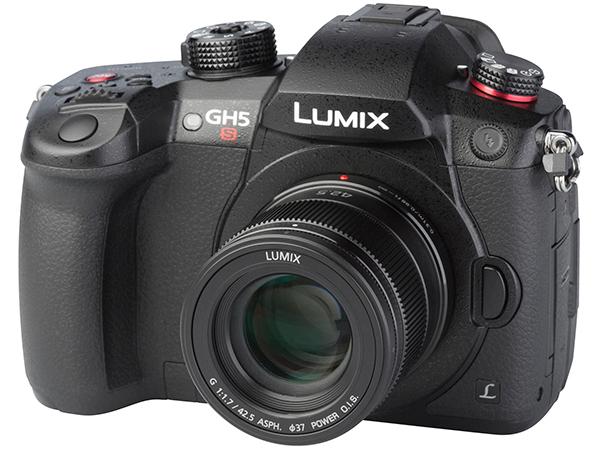
(Editor’s Note: This Lab Review is based on test data and comments supplied by Image Engineering, Shutterbug’s new TIPA-affiliated testing lab. Known worldwide as a leader in the development of advanced testing procedures and manufacturer of ISO-standard testing equipment, Image Engineering is an independent testing lab that specializes in rigorous testing of products for the photo and imaging industries. Test comments are edited by George Schaub, a member of TIPA’s Technical Committee.)
The Panasonic Lumix GH5S ($2499, body only) is a mirrorless camera with a 10.2MP high-sensitivity MOS Micro Four Thirds sensor that’s optimized for shooting in low light. While capable of recording still images and video, the Panasonic GH5S is clearly a video-centric mirrorless camera with a very wide range of video format recording capabilities and features.
Aimed at content creators who want more than a just “hybrid” DSLR simply capable of recording both video and stills, the Panasonic GH5S is for those who desire a camera with pro-style features and excellent performance in low light along with high-quality video output. Let’s take a closer look at this new mirrorless “master of the dark arts,” which is the followup to the popular Panasonic GH5 from last year.
Features, Build & Handling
The Panasonic GH5S has a nice deep grip that makes it very comfortable in the hand. The small and portable but robust body is made of magnesium alloy and is said to be dust- and weather-sealed. Although we wouldn’t describe it as heavy, the camera is weighty enough to not be the first choice for a long walk.

The Panasonic GH5S body boasts a good number of buttons, many of which are programmable. This makes the camera very customizable for those who like direct access via buttons. There is also a small joystick and a large directional wheel, plus, on the top, two convenient wheels for changing shutter speed and aperture. The top of the camera also sports two large dials. There is an on-and-off switch under the drive mode dial, with a green light that stays lit when the camera is on. The left-hand dial includes options for 4K still photography, post-focus photo mode, time lapse, self-timer, and burst, as well as single shot mode.
The Panasonic GH5S’s monitor is tiltable and can be swiveled, plus has touchscreen capability. There is a nice electronic viewfinder with approximately 100% coverage and a sensitive eye sensor with large rubber eyepiece. The eye sensor is quite sensitive: the monitor frequently switches off, even when handling the camera normally with live view – and even when the user’s fingers are not very close to the sensor. Fortunately, for those who prefer to navigate using the monitor, the eye sensor can be switched off. We note that the GH5S has no on-board stabilizer, although one can use the menu to can turn on the stabilizer in lenses. (More on this below.)
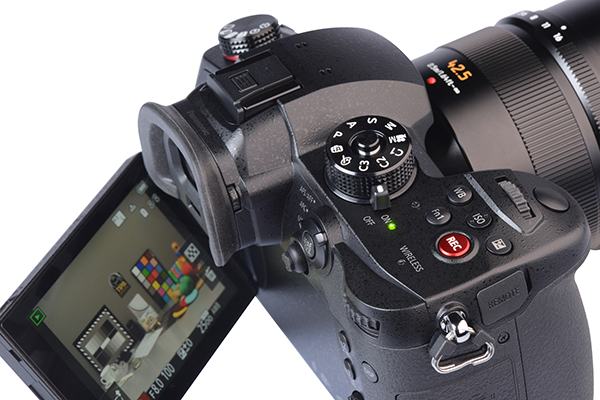
One interesting feature is the “dual native ISO,” a method by which the Panasonic GH5S produces low-noise still images at ISO 400 and 2500, achieved by having dual circuits in the sensor, that permits different approaches to signal amplification. These are selectable by the user or automatically by the camera. This option is most useful in video where the shutter speed cannot be too slow to compensate in low light conditions.
With the Panasonic GH5S, photographers can choose either 14-bit or 12-bit Raw; a “pre-burst” 4K recording, in which the camera captures images seen for about one second before the shutter button has been pressed; and focus bracketing and focus stacking. Other bracketing options include exposure, aperture, and white balance. The 22 filter effects include “bleach,” rough and silky monochrome, as well as pop colors and star filters.
There are two quick menus: settings can be made directly from the info screen or via the quick menu button. Settings can be changed quickly, albeit after the user becomes accustomed to the camera’s various routes. One odd quirk on the Panasonic GH5S is that returning to the menu brings the user back to the last point visited before exiting, rather than to a starting screen of the menu.
The Panasonic GH5S is equipped with microphone and headphone sockets, an HDMI socket, USB, and connections via Bluetooth and WiFi. Some jacks are under rubber covers, and others have removable covers. Nearby is a small (attached) rubber cover that permits use of a DC coupler in the battery slot, together with an AC adaptor.
Video Setups
There’s no question that the Panasonic GH5S includes a number of features that videographers will find very useful. For example, videos are not limited in length to a little under thirty minutes, which is often the case with digital cameras. One can also shoot 4K and even Cinema 4K, plus with anamorphic lenses (and even view the scene shot with the anamorphic lens in the panoramic cinema format while filming). The flash jack can be used to synchronize the time code; the camera can also output color bars and a test tone. The dual native ISO settings for video (in V-Log L and HLG (Hybrid Log-Gamma modes) are ISO 800 and 5000.
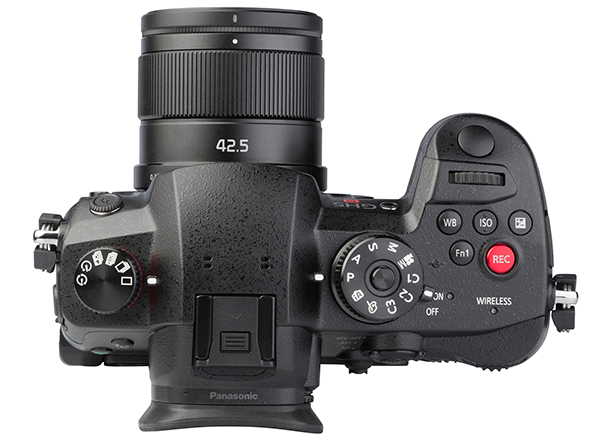
The video record button on the top of the camera body is shiny, red, and a little larger than the other buttons. The user can choose “movie” in the drive mode dial on the top of the camera, or within the menu. Other choices include shutter and aperture priority, manual and program modes for filming. Filters, such as sepia toning, or picture styles such as vivid colors, can be set for video recording. There are many options for adjusting elements of video picture quality, such as the master pedestal, which Panasonic says it is an adjustment of blacks. The Panasonic GH5S also allows the choice of a variety of aspect ratios, including 16:9 for Cinema and 4K to 3:2. (Note that the numerous aspect ratios are available for still images as well.)
Images can be extracted from videos and saved in camera, and still photos can be captured while videos are being recorded. As mentioned, the lack of a stabilizer is probably due to the priority given to video: the thinking, we suppose, is that serious videographers will use supports and rigs that will provide the stabilization needed.
Image Quality: Stills
Speed: The Panasonic Lumix GH5S takes 0.9 seconds to start up. It can deliver 9.2 frames per second in the best JPEG format until the card is full. As there are two cards slots, and the cards can be set to relay from one to another, it seems that there are many options for creating a lot of frames with this camera. It performs nearly as well in Raw, shooting 9.1 frames per second until the card is full.
The total shooting time, including autofocus in bright light, takes 0.15 seconds, within which the autofocus takes 0.08 seconds. In low light, the autofocus in Live View took 0.12 seconds, for a total shooting time of 0.19 seconds.
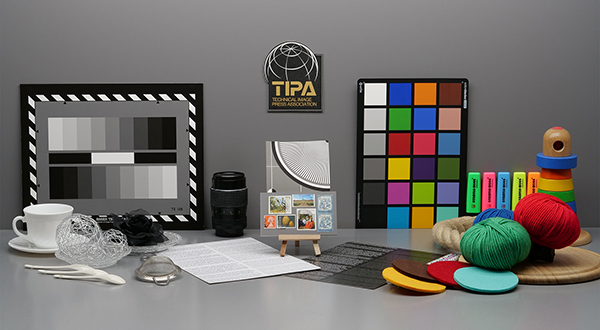
Resolution: Our measurements show that the Panasonic GH5S uses 94% of its Micro Four Thirds sensor at the lowest ISO (1304 line pairs per picture height (LP/PH)). The camera continues to use most of its sensor at all lower ISOs, although resolution decreases slowly as ISO rises: 90% at ISO 1600 and nearly that at ISO 3200. At the highest “non-extended” ISO, 51,200, it drops down to 74% of the theoretical maximum.
Artifacts and Sharpening: Our tests reveal a low proportion of artifacts produced at ISO 400 in both high- and low-contrast parts of the scene. At ISO 6400, the proportion of artifacts in high-contrast parts of the scene is higher, although not drastically. We do note that sharpening is more perceptible along low contrast edges at higher ISO settings.
Noise and Dynamic Range: Visual noise is quite moderate, depending on viewing conditions—enlarged to 100% on a monitor or as a small or large print. At 100% on a monitor some noise is visible even at the lowest ISOs, especially in darker tones. In a postcard-sized print or on a mobile screen, noise is not noticeable at the lower ISOs, and only becomes so above ISO 3200. A large print made from an image shot by the Panasonic GH5S at lower ISOs does not show visible noise, although the visual noise would become apparent at ISO 3200.
Dynamic range is above 8 f-stops at all non-extended ISOs. The best dynamic range is at ISO 800, where it is 10.0 f-stops. At other ISOs between the lowest, ISO 160, and ISO 3200, the dynamic range was measured at more than 9 f-stops.
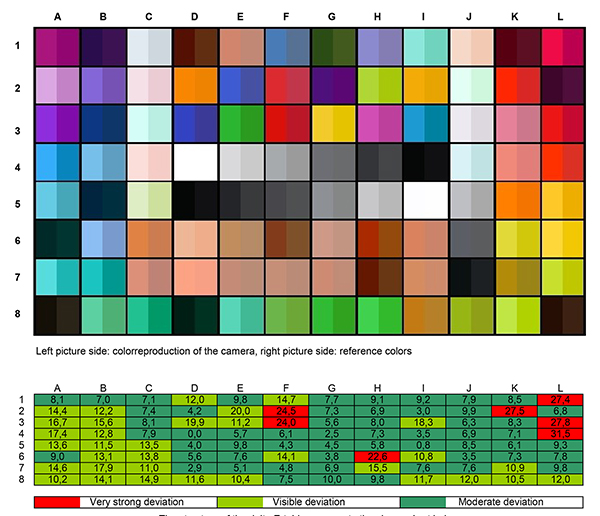
Color: Color reproduction is fairly good, with very few strong deviations from the original color, nearly all of them being reds. The automatic white balance at the lowest ISO is fairly good, although that slips a bit in ISOs from 400 to 6400: we do note that it returns to good behavior at ISO 12,800 and ISO 25,600.
Image Quality: Video
Since the Panasonic GH5S is designed primarily for video, it is no surprise image quality measurements of frames grabbed from video clips filmed at low and high ISOs are excellent. The camera uses as much of its 10-megapixel Micro Four Thirds sensor for video as it does for still images. Higher ISO videos are very similar in quality to videos filmed at a lower ISO.
Resolution: Measurements of frames grabbed from a video captured at low ISO show a resolution of 1020 LP/PH (94% of the theoretical maximum). At high ISO, the resolution is very similar, at 982 LP/PH (91% of the theoretical maximum).
Artifacts and Detail: There is relatively little problem with detail reproduction and artifacts, with only moderate artifacts at lowers ISOs and an expected though moderate increase at higher speed settings, even at ISO 12,800.
Sharpening and Noise: There is mild to no measurable sharpening noticeable even at high ISOs. Visual noise was below the threshold to be noticeable at both low and high ISOs, although it does, as expected, become apparent at and above ISO 3200.
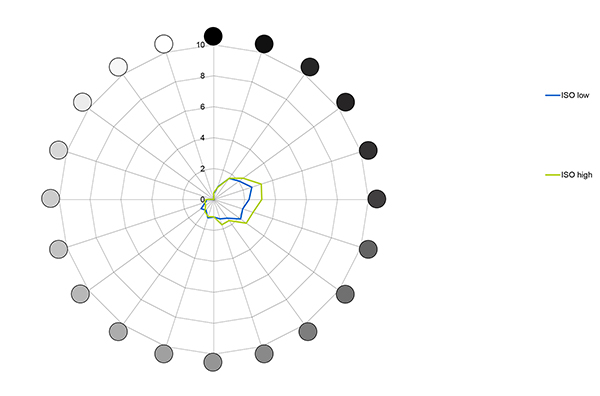
Dynamic range is above 8 f-stops at all “non-extendable” ISOs measured: we do note that the best dynamic range is at ISO 800, which is also the range at ISO 200, with an impressive 9 f-stop range from ISO 400-12,800.
Color: Automatic white balance in video is excellent at both low and high ISOs. Color Reproduction is quite good, with very few strong deviations from color standards.
Conclusion
There’s no question that the Panasonic GH5S is a video-centric mirrorless camera that specializes in shooting in low light, although tests reveal that still quality should be sufficient for many uses. Dedicated photographers should keep in mind though that the GH5S is a lower resolution still camera, equipped with only a 10MP Micro Four Thirds image sensor. That may be fine for shooting video, but some photographers may find 10MP doesn’t offer enough resolution for large photo prints. However, the Panasonic GH5S’ wide array of video formats, recording modes and connections make this a camera that avid video content creators and even some professional cinematographers will, no doubt, put to good use. Indeed, for many videographers, the small, portable and unimposing Panasonic GH5S is more than enough camera to shoot short videos, interviews, documentaries and even feature length films. The wide array of Micro Four Thirds lenses you can use with the Panasonic GH5S add to the many video and still photography options which, all-in-all, make this a flexible and full-featured camera with pro-style video-making functionality.
The Panasonic Lumix GH5S sells for a list price of $2499, body only. For more information, visit Panasonic.com.
Pros
+ A full-featured, pro-style video camera in a small and portable body
+ Offers a wide range of video formats and connectivity options
+ Very good to excellent video quality with low noise, good dynamic range and decent resolution for video
Cons
- Though not a negative, this is clearly a video-centric camera
- Low resolution for still image capture
- Overly sensitive eye sensor

















































